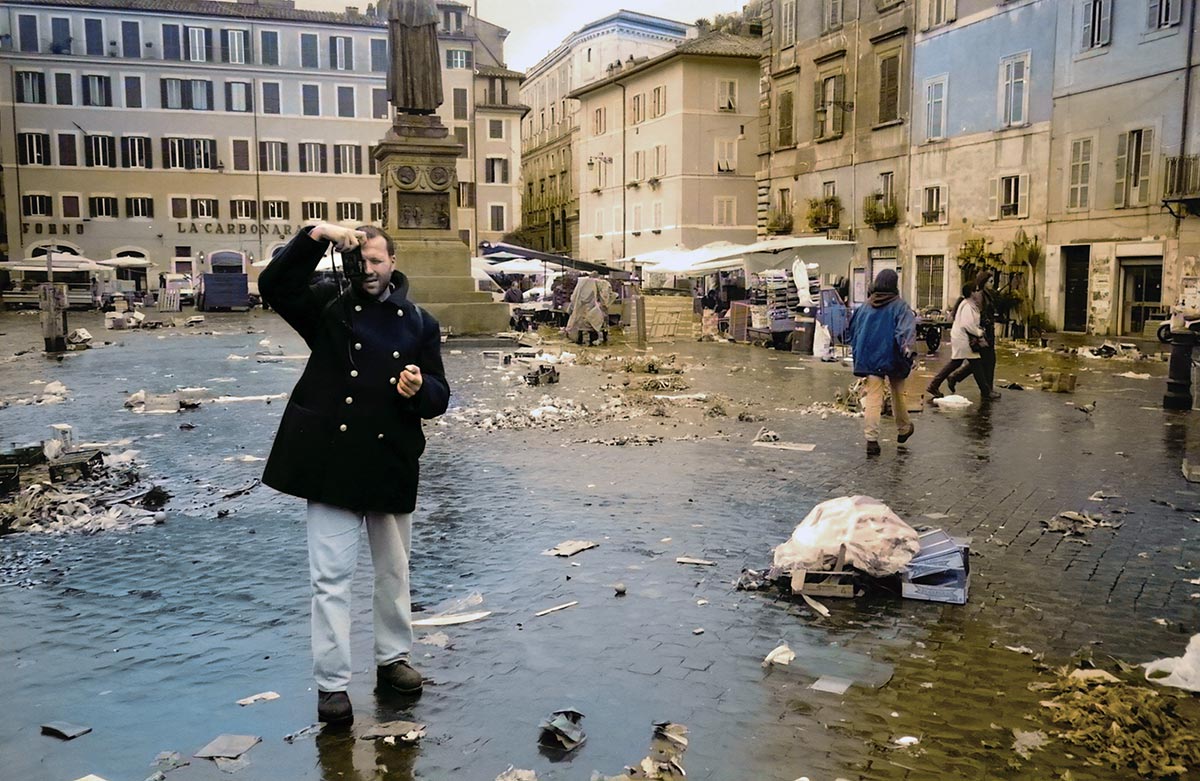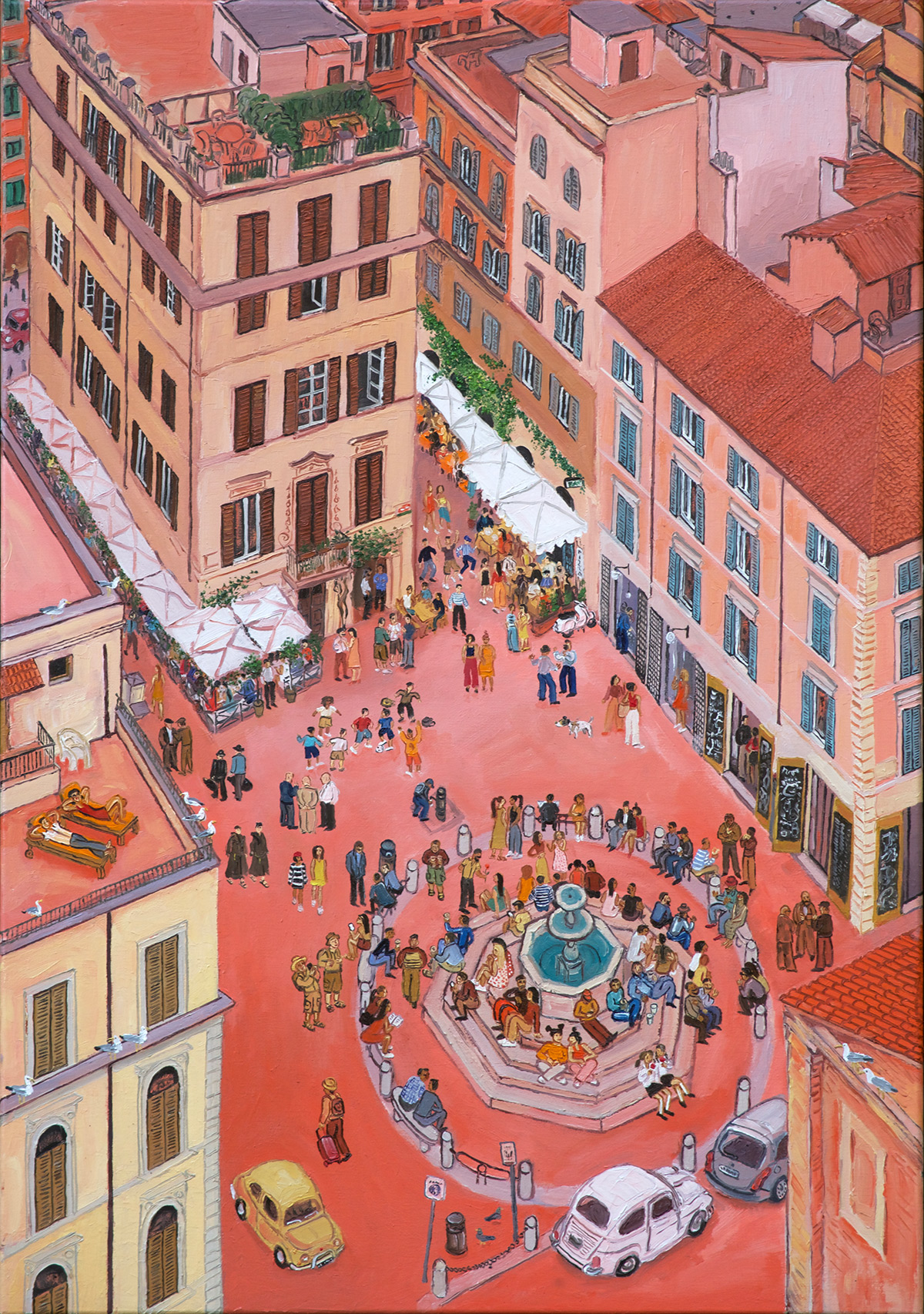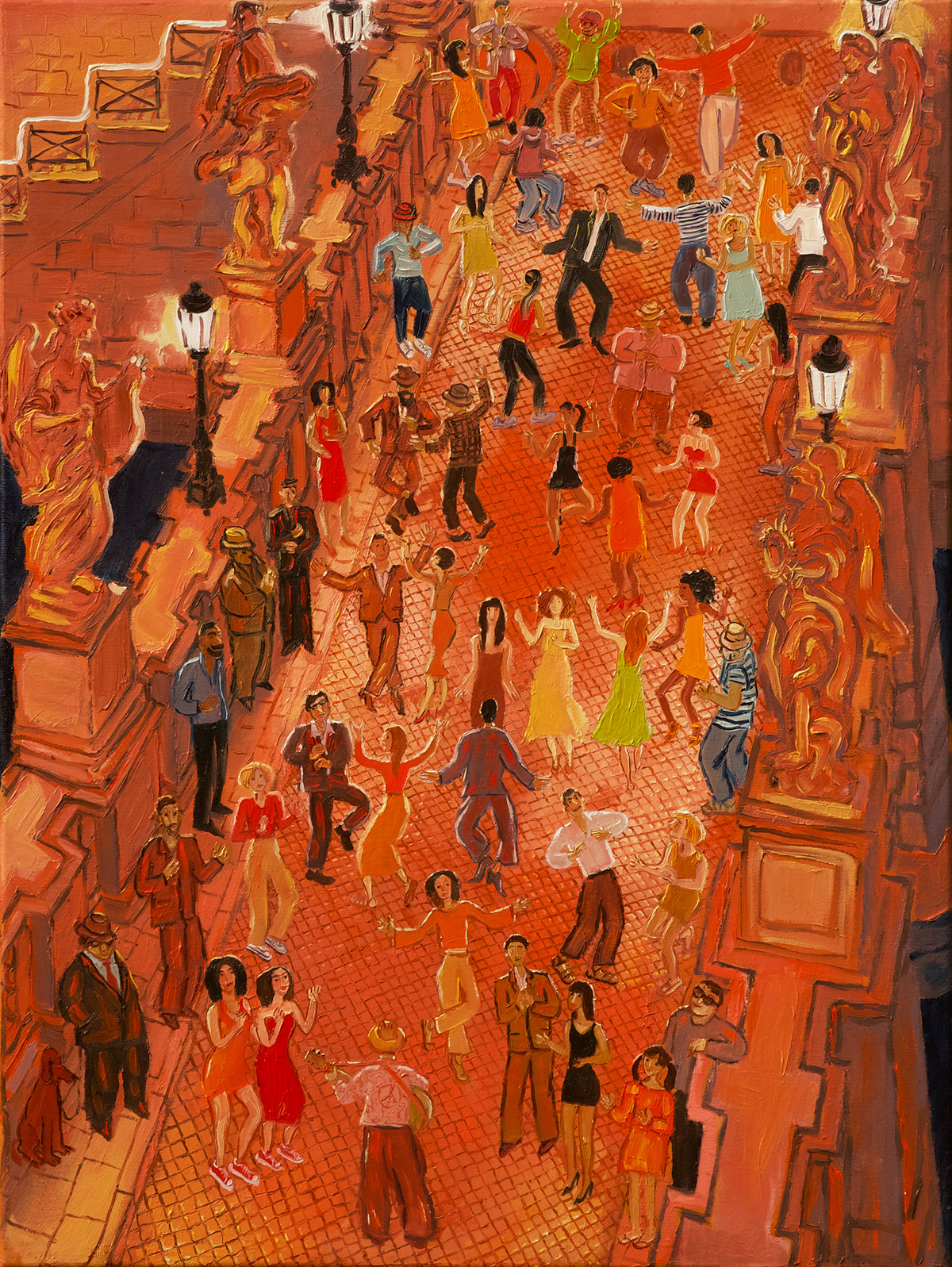Roman Holiday
Roman Holiday

The thing with Rome is that once you go there, you’re lost. I was lost in this way, too. The first time I was in Rome was in 1998 with a trip organised by the Warsaw Academy of Fine Arts, with a group of colleagues. Admittedly, I was already a graduate, but I got to go on the trip.
We arrived to Rome at night; we were staying on the outskirts, so I didn’t see the city until the following day, when the pilgrimage through the museums began – one, two, three. Great admiration and being overwhelmed by the amount of artwork at the same time. And on the way from museum to museum, all those churches familiar from art history classes and textbooks. In a word, childlike delight – look, there’s the Il Gesù, look, there’s the Via Appia! In addition, it was November, there were no tourists and we saw the city as the Romans see it.
For me, Rome is a band of endless possibilities and delights – you can do a multi-day Caravaggio-themed excursion, and another one following in the footsteps of antiquity.
For the last few years, I have had the opportunity to get to know Rome in yet another way, more from the inside. Michael Mellinghoff, a German married to an Italian woman and settled in Rome, shows my paintings to the local public. Thanks to him, I explore the Monti district in the heart of the city, get an up-close look at the lives of the Romans, I am a guest in their homes, I dine with them on the town and taste the best Brunello.
A few years ago, I discovered the extraordinary pleasure of drawing outdoors. Mostly I use a thin brush and poster paint. I like to sit somewhere higher up, go up to the second or third floor, and draw. This is a moment of pure joy for me. When I was in Rome recently, I sat on a hill above the Botanical Garden. I drew Rome from above, all those roofs. I drew one conclusion from this open-air experience: I need to buy myself some binoculars.

Via Panisperna
The winding street of the Monti district, in the ancient part of Rome, is full of historical monuments, some of the oldest restaurants in the city, dating back as far as the 19th century, tiny (…)
The winding street of the Monti district, in the ancient part of Rome, is full of historical monuments, some of the oldest restaurants in the city, dating back as far as the 19th century, tiny studios, boutiques and bars. If you look closely, you can see Trattoria Le Tavernelle and Barzilai, two pubs to which I have dedicated separate images.

Barzilai
A typical Italian street by day – pavements cluttered with scooters. But come evening, the restaurants will open, and the street will completely change, it will be like in Fellini’s Roma – (…)
A typical Italian street by day – pavements cluttered with scooters. But come evening, the restaurants will open, and the street will completely change, it will be like in Fellini’s Roma – tables will take over the pavement and even the roadway, people will feast for hours.

Trattoria Le Tavernelle
Rumour has it that this place serves the best cacio e pepe in Rome, a sensational spaghetti made in the simplest possible way – the noodles are cooked in a very small amount of water, and this (…)
Rumour has it that this place serves the best cacio e pepe in Rome, a sensational spaghetti made in the simplest possible way – the noodles are cooked in a very small amount of water, and this thick, salty water is poured into a pan with roasted peppercorns, to which cheese and the nearly cooked pasta are then added. Primitively simple – just three ingredients, well four if you count water, and the result – sensational.

Fontana dei Catecumeni
A wonderful place, Piazza della Madonna dei Monti. The square and fountain is an open-air café. Locals and tourists carry wine and beer (you can get Ichnus from Sardinia here!) from the surrounding (…)
A wonderful place, Piazza della Madonna dei Monti. The square and fountain is an open-air café. Locals and tourists carry wine and beer (you can get Ichnus from Sardinia here!) from the surrounding bars and shops and hang out on the steps of the 16th-century fountain. Supposedly in Rome you can’t sit on monuments, but in a city where almost everything is a monument, no one pays much mind to such prohibitions.


Pantheon
I never paint from photographs. I take photographs of details – a cobblestone, a hydrant, a signpost – which I use when working on a painting. I sometimes use Google Street View models or other (…)
I never paint from photographs. I take photographs of details – a cobblestone, a hydrant, a signpost – which I use when working on a painting. I sometimes use Google Street View models or other people’s drone flights. I painted Pantheon based on reports from three different flights, combining angles, etc. In any case, you can’t find a photo like this online.

Caffetteria L’ 800
In the spring of 2010, I went to Rome to film an exhibition by the sculptor Antoni Rząsa in the Basilica di Santo Stefano Rotondo al Celio. The Rząsa family was involved in assembling the (…)
In the spring of 2010, I went to Rome to film an exhibition by the sculptor Antoni Rząsa in the Basilica di Santo Stefano Rotondo al Celio. The Rząsa family was involved in assembling the exhibition. Already on the first day of work, we were asked to leave the church at 1 p.m., because that’s when the two-hour lunch break begins, and for Italians, it is a sacred time. The churchman pointed us to the best place in the area for lunch – Caffetteria L’ 800 on Via di San Giovanni. It was March – artichoke season – so I ordered a lasagne with artichokes. It was so good that to this day, when someone asks me what I fancy, what I would like to eat, I reply: lasagne with artichokes. The corner where the venue is located, is quite Parisian, but just step around the corner, and the view is the most Roman possible – the Colosseum.
This trip had another big plus: Antoni Rząsa’s exhibition was opened by the writer Jarosław Mikołajewski, then head of the Polish Institute in Rome. He then showed us around the city, telling us about ‘his’ Rome.

Dances on the bridge
This is the Ponte Sant’Angelo – the Bridge of Angels. And admittedly, I didn’t see anyone dancing on it, but that doesn’t matter, because I create that situation in the painting. If I want (…)
This is the Ponte Sant’Angelo – the Bridge of Angels. And admittedly, I didn’t see anyone dancing on it, but that doesn’t matter, because I create that situation in the painting. If I want people to dance, they dance. Anyway, the bridge is closed to traffic, and in Rome, all it takes is for someone with a guitar to start singing ‘Volare’, and people stop and join in – any excuse is good for spontaneous fun. On a recent visit to Rome, I saw a fashion shoot for Vogue on the Ponte Sant’Angelo – models, crew, big screens with fashion brand logos. And above it all hung a giant full moon, and the bridge was flooded with orange light – pure magic.

Wine tasting
Michael Mellinghoff is an admirer of Tuscan Brunello di montalcino. This red wine is known for its longevity, reaching maturity after 5–10 years, and is suitable for storage for several decades. A (…)
Michael Mellinghoff is an admirer of Tuscan Brunello di montalcino. This red wine is known for its longevity, reaching maturity after 5–10 years, and is suitable for storage for several decades.
A tasting is always a ritual: large glasses, turning the wine in the glass, sniffing, tasting. A bit of a spectacle, but once you’ve tasted this wine, you don’t want to drink anything else. The drink of the gods.

3 beers and a glass
The beer is less important here, as I find the Moretti a rather nasty one, the glass of Leszek Nagrabecki’s design is more important. I appreciate his distinctive glasses; I like to drink from them (…)
The beer is less important here, as I find the Moretti a rather nasty one, the glass of Leszek Nagrabecki’s design is more important. I appreciate his distinctive glasses; I like to drink from them and I enjoy painting them in still lifes.

Scooters
Rome, like every other Italian city, is full of scooters. They are loud, efficient and ubiquitous – the best mode of transport, and a permanent feature of the streets and (…)
Rome, like every other Italian city, is full of scooters. They are loud, efficient and ubiquitous – the best mode of transport, and a permanent feature of the streets and squares.

Soirée
In Rome, it’s nice to just sit in a bar, watch people, have a glass of wine or beer, experience the carefree conviviality. It seems like the perfect situation for a painter to draw bar scenes, but (…)
In Rome, it’s nice to just sit in a bar, watch people, have a glass of wine or beer, experience the carefree conviviality. It seems like the perfect situation for a painter to draw bar scenes, but I neither like nor can do that, so the mélanges are only created in the studio.

Sora Margherita
A spot in Piazza delle Cinque Scala in the Jewish quarter. Slightly off the beaten track, with a rather garage-like atmosphere. The handwritten menu has its own poetics. In spring, they serve (…)
A spot in Piazza delle Cinque Scala in the Jewish quarter. Slightly off the beaten track, with a rather garage-like atmosphere. The handwritten menu has its own poetics. In spring, they serve carciofi alla giudia, or Jewish-style artichokes (giudio is the Roman term for Jew), deep-fried, a speciality of Roman–Jewish cuisine. The tiramisu is also good.





